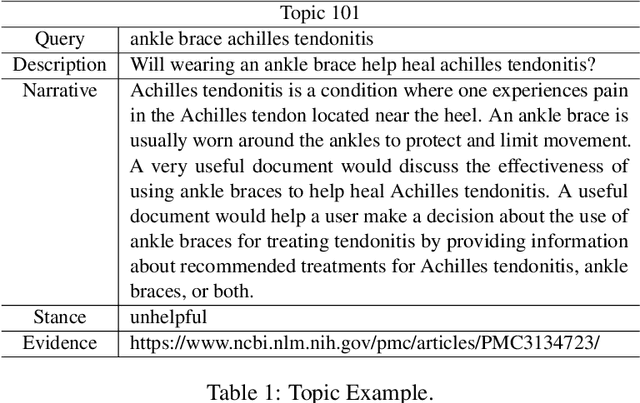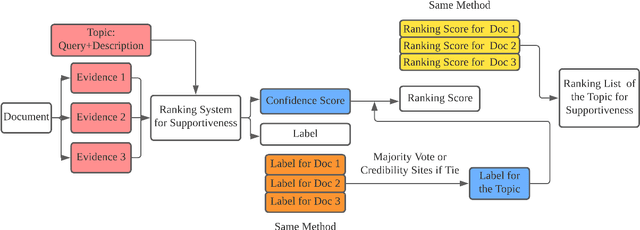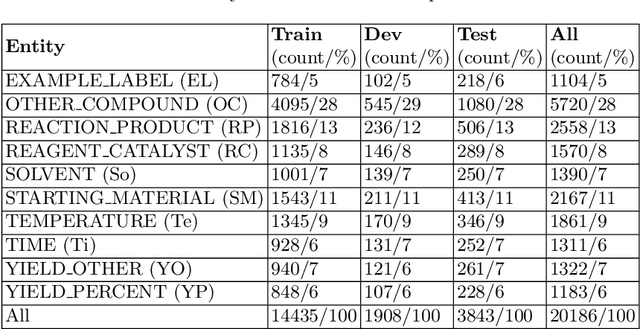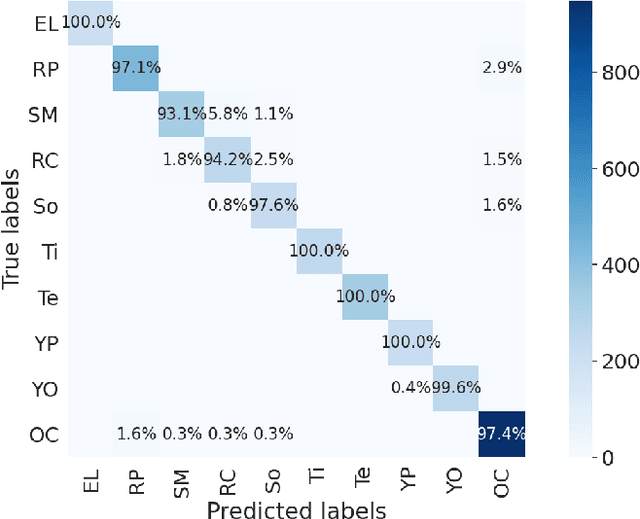Douglas Teodoro
ICU-TSB: A Benchmark for Temporal Patient Representation Learning for Unsupervised Stratification into Patient Cohorts
Jun 06, 2025Abstract:Patient stratification identifying clinically meaningful subgroups is essential for advancing personalized medicine through improved diagnostics and treatment strategies. Electronic health records (EHRs), particularly those from intensive care units (ICUs), contain rich temporal clinical data that can be leveraged for this purpose. In this work, we introduce ICU-TSB (Temporal Stratification Benchmark), the first comprehensive benchmark for evaluating patient stratification based on temporal patient representation learning using three publicly available ICU EHR datasets. A key contribution of our benchmark is a novel hierarchical evaluation framework utilizing disease taxonomies to measure the alignment of discovered clusters with clinically validated disease groupings. In our experiments with ICU-TSB, we compared statistical methods and several recurrent neural networks, including LSTM and GRU, for their ability to generate effective patient representations for subsequent clustering of patient trajectories. Our results demonstrate that temporal representation learning can rediscover clinically meaningful patient cohorts; nevertheless, it remains a challenging task, with v-measuring varying from up to 0.46 at the top level of the taxonomy to up to 0.40 at the lowest level. To further enhance the practical utility of our findings, we also evaluate multiple strategies for assigning interpretable labels to the identified clusters. The experiments and benchmark are fully reproducible and available at https://github.com/ds4dh/CBMS2025stratification.
The Evolving Landscape of Generative Large Language Models and Traditional Natural Language Processing in Medicine
May 15, 2025Abstract:Natural language processing (NLP) has been traditionally applied to medicine, and generative large language models (LLMs) have become prominent recently. However, the differences between them across different medical tasks remain underexplored. We analyzed 19,123 studies, finding that generative LLMs demonstrate advantages in open-ended tasks, while traditional NLP dominates in information extraction and analysis tasks. As these technologies advance, ethical use of them is essential to ensure their potential in medical applications.
GLiNER-biomed: A Suite of Efficient Models for Open Biomedical Named Entity Recognition
Apr 01, 2025



Abstract:Biomedical named entity recognition (NER) presents unique challenges due to specialized vocabularies, the sheer volume of entities, and the continuous emergence of novel entities. Traditional NER models, constrained by fixed taxonomies and human annotations, struggle to generalize beyond predefined entity types or efficiently adapt to emerging concepts. To address these issues, we introduce GLiNER-biomed, a domain-adapted suite of Generalist and Lightweight Model for NER (GLiNER) models specifically tailored for biomedical NER. In contrast to conventional approaches, GLiNER uses natural language descriptions to infer arbitrary entity types, enabling zero-shot recognition. Our approach first distills the annotation capabilities of large language models (LLMs) into a smaller, more efficient model, enabling the generation of high-coverage synthetic biomedical NER data. We subsequently train two GLiNER architectures, uni- and bi-encoder, at multiple scales to balance computational efficiency and recognition performance. Evaluations on several biomedical datasets demonstrate that GLiNER-biomed outperforms state-of-the-art GLiNER models in both zero- and few-shot scenarios, achieving 5.96% improvement in F1-score over the strongest baseline. Ablation studies highlight the effectiveness of our synthetic data generation strategy and emphasize the complementary benefits of synthetic biomedical pre-training combined with fine-tuning on high-quality general-domain annotations. All datasets, models, and training pipelines are publicly available at https://github.com/ds4dh/GLiNER-biomed.
MKG-Rank: Enhancing Large Language Models with Knowledge Graph for Multilingual Medical Question Answering
Mar 21, 2025Abstract:Large Language Models (LLMs) have shown remarkable progress in medical question answering (QA), yet their effectiveness remains predominantly limited to English due to imbalanced multilingual training data and scarce medical resources for low-resource languages. To address this critical language gap in medical QA, we propose Multilingual Knowledge Graph-based Retrieval Ranking (MKG-Rank), a knowledge graph-enhanced framework that enables English-centric LLMs to perform multilingual medical QA. Through a word-level translation mechanism, our framework efficiently integrates comprehensive English-centric medical knowledge graphs into LLM reasoning at a low cost, mitigating cross-lingual semantic distortion and achieving precise medical QA across language barriers. To enhance efficiency, we introduce caching and multi-angle ranking strategies to optimize the retrieval process, significantly reducing response times and prioritizing relevant medical knowledge. Extensive evaluations on multilingual medical QA benchmarks across Chinese, Japanese, Korean, and Swahili demonstrate that MKG-Rank consistently outperforms zero-shot LLMs, achieving maximum 35.03% increase in accuracy, while maintaining an average retrieval time of only 0.0009 seconds.
MMLU-ProX: A Multilingual Benchmark for Advanced Large Language Model Evaluation
Mar 13, 2025

Abstract:Traditional benchmarks struggle to evaluate increasingly sophisticated language models in multilingual and culturally diverse contexts. To address this gap, we introduce MMLU-ProX, a comprehensive multilingual benchmark covering 13 typologically diverse languages with approximately 11,829 questions per language. Building on the challenging reasoning-focused design of MMLU-Pro, our framework employs a semi-automatic translation process: translations generated by state-of-the-art large language models (LLMs) are rigorously evaluated by expert annotators to ensure conceptual accuracy, terminological consistency, and cultural relevance. We comprehensively evaluate 25 state-of-the-art LLMs using 5-shot chain-of-thought (CoT) and zero-shot prompting strategies, analyzing their performance across linguistic and cultural boundaries. Our experiments reveal consistent performance degradation from high-resource languages to lower-resource ones, with the best models achieving over 70% accuracy on English but dropping to around 40% for languages like Swahili, highlighting persistent gaps in multilingual capabilities despite recent advances. MMLU-ProX is an ongoing project; we are expanding our benchmark by incorporating additional languages and evaluating more language models to provide a more comprehensive assessment of multilingual capabilities.
CT-ADE: An Evaluation Benchmark for Adverse Drug Event Prediction from Clinical Trial Results
Apr 19, 2024Abstract:Adverse drug events (ADEs) significantly impact clinical research and public health, contributing to failures in clinical trials and leading to increased healthcare costs. The accurate prediction and management of ADEs are crucial for improving the development of safer, more effective medications, and enhancing patient outcomes. To support this effort, we introduce CT-ADE, a novel dataset compiled to enhance the predictive modeling of ADEs. Encompassing over 12,000 instances extracted from clinical trial results, the CT-ADE dataset integrates drug, patient population, and contextual information for multilabel ADE classification tasks in monopharmacy treatments, providing a comprehensive resource for developing advanced predictive models. To mirror the complex nature of ADEs, annotations are standardized at the system organ class level of the Medical Dictionary for Regulatory Activities (MedDRA) ontology. Preliminary analyses using baseline models have demonstrated promising results, achieving 73.33% F1 score and 81.54% balanced accuracy, highlighting CT-ADE's potential to advance ADE prediction. CT-ADE provides an essential tool for researchers aiming to leverage the power of artificial intelligence and machine learning to enhance patient safety and minimize the impact of ADEs on pharmaceutical research and development. Researchers interested in using the CT-ADE dataset can find all necessary resources at https://github.com/xxxx/xxxx.
DS4DH at #SMM4H 2023: Zero-Shot Adverse Drug Events Normalization using Sentence Transformers and Reciprocal-Rank Fusion
Aug 15, 2023

Abstract:This paper outlines the performance evaluation of a system for adverse drug event normalization, developed by the Data Science for Digital Health group for the Social Media Mining for Health Applications 2023 shared task 5. Shared task 5 targeted the normalization of adverse drug event mentions in Twitter to standard concepts from the Medical Dictionary for Regulatory Activities terminology. Our system hinges on a two-stage approach: BERT fine-tuning for entity recognition, followed by zero-shot normalization using sentence transformers and reciprocal-rank fusion. The approach yielded a precision of 44.9%, recall of 40.5%, and an F1-score of 42.6%. It outperformed the median performance in shared task 5 by 10% and demonstrated the highest performance among all participants. These results substantiate the effectiveness of our approach and its potential application for adverse drug event normalization in the realm of social media text mining.
Efficient Joint Learning for Clinical Named Entity Recognition and Relation Extraction Using Fourier Networks: A Use Case in Adverse Drug Events
Feb 08, 2023



Abstract:Current approaches for clinical information extraction are inefficient in terms of computational costs and memory consumption, hindering their application to process large-scale electronic health records (EHRs). We propose an efficient end-to-end model, the Joint-NER-RE-Fourier (JNRF), to jointly learn the tasks of named entity recognition and relation extraction for documents of variable length. The architecture uses positional encoding and unitary batch sizes to process variable length documents and uses a weight-shared Fourier network layer for low-complexity token mixing. Finally, we reach the theoretical computational complexity lower bound for relation extraction using a selective pooling strategy and distance-aware attention weights with trainable polynomial distance functions. We evaluated the JNRF architecture using the 2018 N2C2 ADE benchmark to jointly extract medication-related entities and relations in variable-length EHR summaries. JNRF outperforms rolling window BERT with selective pooling by 0.42%, while being twice as fast to train. Compared to state-of-the-art BiLSTM-CRF architectures on the N2C2 ADE benchmark, results show that the proposed approach trains 22 times faster and reduces GPU memory consumption by 1.75 folds, with a reasonable performance tradeoff of 90%, without the use of external tools, hand-crafted rules or post-processing. Given the significant carbon footprint of deep learning models and the current energy crises, these methods could support efficient and cleaner information extraction in EHRs and other types of large-scale document databases.
DS4DH at TREC Health Misinformation 2021: Multi-Dimensional Ranking Models with Transfer Learning and Rank Fusion
Feb 14, 2022



Abstract:This paper describes the work of the Data Science for Digital Health (DS4DH) group at the TREC Health Misinformation Track 2021. The TREC Health Misinformation track focused on the development of retrieval methods that provide relevant, correct and credible information for health related searches on the Web. In our methodology, we used a two-step ranking approach that includes i) a standard retrieval phase, based on BM25 model, and ii) a re-ranking phase, with a pipeline of models focused on the usefulness, supportiveness and credibility dimensions of the retrieved documents. To estimate the usefulness, we classified the initial rank list using pre-trained language models based on the transformers architecture fine-tuned on the MS MARCO corpus. To assess the supportiveness, we utilized BERT-based models fine-tuned on scientific and Wikipedia corpora. Finally, to evaluate the credibility of the documents, we employed a random forest model trained on the Microsoft Credibility dataset combined with a list of credible sites. The resulting ranked lists were then combined using the Reciprocal Rank Fusion algorithm to obtain the final list of useful, supporting and credible documents. Our approach achieved competitive results, being top-2 in the compatibility measurement for the automatic runs. Our findings suggest that integrating automatic ranking models created for each information quality dimension with transfer learning can increase the effectiveness of health-related information retrieval.
Named entity recognition in chemical patents using ensemble of contextual language models
Jul 24, 2020



Abstract:Chemical patent documents describe a broad range of applications holding key information, such as chemical compounds, reactions, and specific properties. However, the key information should be enabled to be utilized in downstream tasks. Text mining provides means to extract relevant information from chemical patents through information extraction techniques. As part of the Information Extraction task of the Cheminformatics Elseiver Melbourne University challenge, in this work we study the effectiveness of contextualized language models to extract reaction information in chemical patents. We compare transformer architectures trained on a generic corpus with models specialised in chemistry patents, and propose a new model based on the combination of existing architectures. Our best model, based on the ensemble approach, achieves an exact F1-score of 92.30% and a relaxed F1 -score of 96.24%. We show that the ensemble of contextualized language models provides an effective method to extract information from chemical patents. As a next step, we will investigate the effect of transformer language models pre-trained in chemical patents.
 Add to Chrome
Add to Chrome Add to Firefox
Add to Firefox Add to Edge
Add to Edge